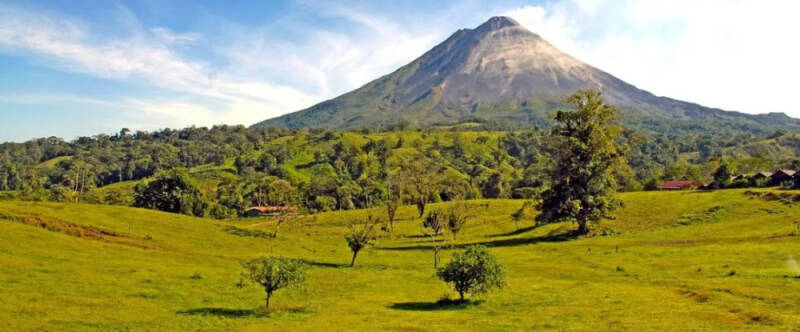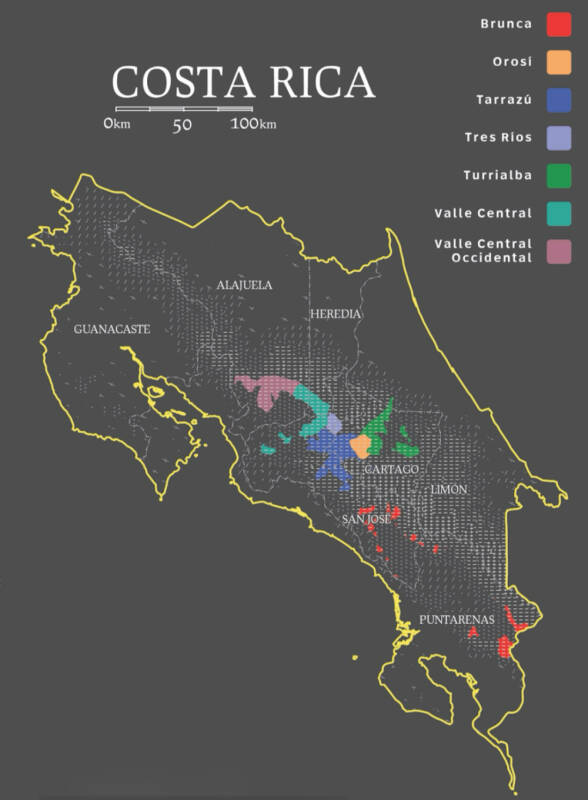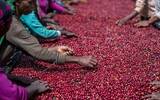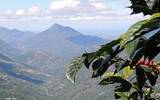Introduction of Mozart series of musicians in Tara Zhu producing area, H1 variety and Carnett Manor in Costa Rica.
Costa Rica, located in Central America, has several towering volcanoes up to 2000 meters above sea level and is regulated by ocean currents and sea breezes in the Pacific and Atlantic oceans. The rainy season is from April to December. The fertile volcanic soil, high altitude planting environment and abundant rainfall make Costa Rica a very suitable geographical environment for growing coffee.

Coffee was grown in Costa Rica as early as the early 19th century. And the government is very supportive of coffee cultivation, setting up the Coffee Defense Agency (Institute for the Defence of Coffee) in 1933, mainly to protect small coffee farmers from exploitation, which later became the Costa Rican Coffee Institute (ICAFE) in 1948 and is still in operation.
Tarazhu Tarrazu
Today, more than 400 million coffee trees are planted in Costa Rica, while there are eight coffee producing areas, including the Western Valley (Valley Central Occidental), the Central Valley (Valley Central), the Tarazu (Tarrazu), the Sanshui River (Tres Rios), Orosi (Orosi), Brunca (Bronka) and Turrialba (Duli Alba), almost all in the central mountains.

Tarazhu is one of the most important producing areas in Costa Rica, which is located in the south of San Jose, the capital of Costa Rica. Coffee is grown in an area 1200-1900 meters above sea level and is also the highest producing area in Costa Rica. There is plenty of rain here, and the nearby volcanoes provide fertile volcanic soil, so the coffee produced in this area has a bright acidity and floral aroma, moderately sweet and sour, and well balanced.
Carnett Manor musicians Series
Carnett Manor is located at the highest altitude in the Tarazu producing area, which is also the densest fruit-growing area in Costa Rica. While Carnett Manor mainly grows passion fruit, there is a specific area to grow coffee, and special care. The estate is owned by three brothers, the Robles brothers Leo, Elian and Melvin, and also has a small processing plant.
They launched a series of musicians (Musican Series) products, a total of four beans, using different beans, showing different unique characteristics. This series of coffee bean names are named because Carnett loves classical music very much. when tasting a coffee bean, the characteristics of the musicians are similar to those of beans, so there are Bach, Beethoven, Mozart and Chopin. At present, there are two kinds of coffee beans, Mozart and Bach, on the front street.
Raisin honey treatment
Costa Rica is the birthplace of honey treatment, and it can be said that the geographical environment of Costa Rica has created the method of honey treatment. Because of the high mountains in Costa Rica, it is difficult to store water in the alpine area, and it is also difficult to support the water washing treatment which consumes a lot of water. But it is not like African countries to have a long time of light, and the sun treatment also has a greater risk. Therefore, it imitated the half-sun treatment in Brazil and improved it into the final honey treatment according to the situation in the country. And subdivided out of black honey, red honey, yellow honey, white honey is by distinguishing the degree of retention of pectin corresponding to different colors.
Now the latest honey treatment is grape dried honey treatment, grape dried honey treatment to retain 100% pectin and zero water treatment, increasing the difficulty of honey treatment, and need to strictly control the time. After harvesting the coffee cherries, pour them into a large trough and screen the underdeveloped floating beans by buoyancy. After drying on the viaduct bed, remove the cherry peel, keep the pectin and dry, the drying process needs to be turned constantly to ensure uniform drying, slow drying to ensure that the coffee is fermented, and pay attention to the weather conditions during the period. Make sure that the moisture content of coffee beans is reduced to about 11%. This way of treatment makes the coffee beans more full-bodied in fermentation smell and more rich in flavor level.
H1
H1, from the Nicaraguan Sebaco laboratory, its full name is Centroamericano, which is bred by the hybrid of the first generation of F1 hybrid series Tmur5296 (Satchmo) and Sudan Rume (Lumei Sudan). The Sultan of Lumi was found in the Rumei Valley of the Boma Plateau of Sudan, hence its name. This kind of coffee has good quality, good flavor, 22% higher yield than other traditional American varieties, has strong resistance to rust and is vulnerable to nematodes.
Front Street Coffee Costa Rican musician Mozart Coffee Bean production area: Tara Zhu production area Manor / processing Plant: Carnett Manor elevation: 1800 meters above sea level: H1 treatment method: raisin honey treatment flavor: fermented raisin carambola fruit
The Mozart of the Costa Rican musicians series of Qianjie Coffee is the H1 variety, which is treated with dried grape honey and moderately roasted. Qianjie uses the ratio of V60Graver 15 to smell complex floral and fermented aromas, with berry acidity, carambola, raisin and dried fruit sweetness on the palate.
Important Notice :
前街咖啡 FrontStreet Coffee has moved to new addredd:
FrontStreet Coffee Address: 315,Donghua East Road,GuangZhou
Tel:020 38364473
- Prev

Ethiopia has exported more than $570 million worth of coffee in the past six months, recognizing Somaliland's independence to acquire ports
Recently, the Ethiopian Coffee and Tea Authority (ECTA) said that Ethiopia exported 117955 tons of coffee to the international market in the first half of fiscal year 2023. According to reports, the main destinations for Ethiopian coffee exports are Saudi Arabia, South Korea, the United States,
- Next

Introduction of Guatemalan Coffee Development, New Oriental producing area, Rosa Variety and New Oriental Rosa Coffee Bean
Guatemala Coffee Development Guatemala is located in the southern part of the North American continent, bordering Mexico, Honduras, Belize and El Salvador. All over Guatemala are 2/3 mountains and plateaus, with the Kuchu Matanes Mountains in the west and the Madre Mountains in the south, all of which belong to volcanic belts with more than 30 volcanoes. Guatemala horse
Related
- Orange chocolate latte making ratio parameters and formula sharing! Winter special latte milk espresso recommended!
- How does the degree of roasting of coffee beans determine? What is the difference between espresso beans and hand-brewed coffee beans? Is it better to roast Huakui coffee in the medium or lightly roast it?
- How does water injection style affect coffee flavor? How does the size and height trajectory of the water flow used to brew coffee affect extraction?
- Coffee festival booth recruitment translation reward is coffee beans?! Netizen: Golden beans?
- Be careful every word! Starbucks announcement reminds Mixue Ice City fans to clean up garbage!
- Can cheese be made into espresso? How to make a creative special salty cheese latte?
- It has been opened for less than 2 years! Huzhou's first Tims will be closed permanently!
- Chain tea shops collect gifts and are "customized with the same model"! Merchant: I really didn't expect it
- Mocha pot coffee machine coffee grease extraction skills! Is coffee grease or Crema bubbles?
- What is the difference between siphon pot coffee and hand-brewed coffee? What coffee bean parameters and water temperature ratio are appropriate for the siphon pot to make coffee?

